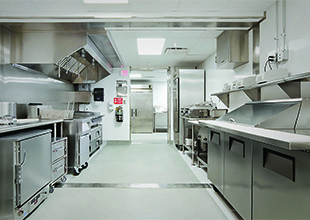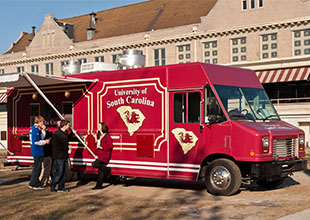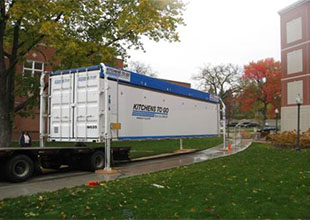Looking back to the halcyon days of 2015, not a single person got the answer correct to “Where do you see yourself in five years?” While change has always come quickly to foodservice, the rate and scale of change in 2020 has been a staggering.
The early, painful decisions undertaken to deal with new threats, often referred to as “the new normal,” are no exception – the new normal is changing just as quickly as the old normal did.
Operations need to look forward to the “next normal” to adapt, evolve and innovate like never before.
Re-envisioning Business Continuity
Most “regular” disasters are localized, and continuity plans generally consist of picking up the pieces and staging a rebound back to operations as usual. You deal with the immediate cleanup and then deal with the recovery.
With the coronavirus, the cleanup has been drawn out indefinitely.
The pandemic has forced operators to re-think every aspect of their business. Cafes, dining halls, cafeterias, and concessions stands have to look different to meet new standards. The unknowns are many: Will take-out and delivery continue to grow in popularity? When, if ever, will self-serve be okay again? Can a grab-and-go menu match the same quality of experience that customers expect?
Bridging the Gap and Long-Term Change
So, what can be expected? If the only guaranteed constant is change, then it’s reasonable to assume that nimble operations will survive, while operations that are slow to adapt will not. It is likely that we will look back on this as the point in time at which many new processes and techniques were developed to improve efficiencies and foodservice delivery.
And while it’s true that each individual operation has its own specific needs to solve for, there are a number of strategies emerging as effective solutions for both commercial and non-commercial operations.
Ghost Kitchens
 Modular kitchens offer state-of-the-art equipment, functionality, and design.
Modular kitchens offer state-of-the-art equipment, functionality, and design.
Ghost kitchens have become a necessity for those dealing with dine-in bans who also wish to remain in operation. These “dark kitchens” produce meals specifically for delivery, curb-side and catering, executing on the assumption that the menu items can’t be served immediately and will have to travel.
What does this mean for non-commercial operators? With the need to de-densify diners, a commissary-based food delivery approach can pull away traffic from traditionally over-dense food locations. When combined with an app for pre-ordering, customers can choose meal options from a designated pickup or delivery location.
Food Trucks
 Create on-the-go dining options; choose from the KTG fleet or build customized vehicle.
Create on-the-go dining options; choose from the KTG fleet or build customized vehicle.
Some experts predict that the full reopening of dining rooms isn’t likely until coronavirus cases reach nominal levels, or there is a fully distributed vaccine. Foodservice operators need to reassess and adjust certain aspects of their business to account for this uncertain timeline. This involves continuing to place a heightened focus on off-premise operations.
For non-commercial operators, food trucks offer on-the-go dining. Unlike most food prep facilities, a food truck can be moved as needed to diffuse the dining population and provide an increased menu variety.
Pop-ups / Outposts / Drive-thru
A mere few months ago, the idea of going through a restaurant drive-thru to pick up not just burgers and fries but also a gallon of milk and a bunch of bananas would have seemed ridiculous. However, in the wake of the COVID-19 pandemic, that has becoming commonplace. Grocery sales and prepared meal kits are among the most popular food innovations that restaurants and healthcare foodservice operations are turning to in the face of sudden declines in traffic and the closure of their seated dining spaces.
These new trends will most likely continue as operators see the value not only for their local communities but also for their shifting revenue streams.
Solutions with Kitchens To Go
 Containerized kitchens integrate with free span structures. Optional PAC® SAC® enclosure available.
Containerized kitchens integrate with free span structures. Optional PAC® SAC® enclosure available.
Kitchens To Go (KTG) provides – for lease or purchase – comprehensive mobile, modular, and containerized commercial kitchens. Foodservice operators have trusted KTG for almost 40 years to help maintain business continuity.
KTG’s modular kitchens provide maximum flexibility with relocatable features. Perfect for ghost kitchens, our units offer open space for both verbal and visual communication and are a cost-effective solution to maximize space for cooking, preparation, service, and storage.
Mobile units from KTG serve everything from one-time special events to daily on-going operations. Our fleet contains units of varying size, utility options, and equipment to meet your needs.
Containerized kitchens are high cube 40’ x 8’ units with high volume production capacity. Connect multiple units to create commercial kitchen complexes. The KTG PAC® Kitchen can be placed and operational quickly.
From planned to unplanned situations, interim kitchen and dining facilities from Kitchens To Go will Keep You Cooking!



